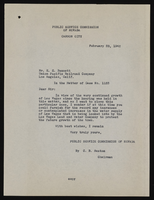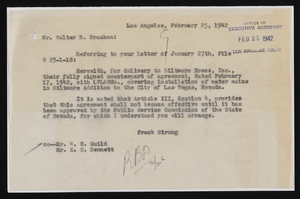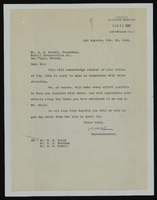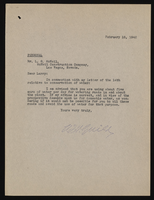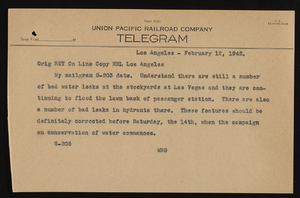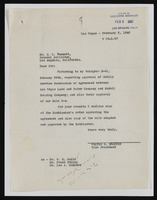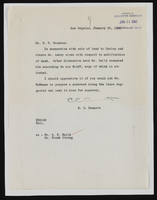Search the Special Collections and Archives Portal
Search Results
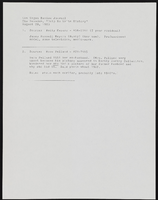
Water skiier, image 003
Date
1943
Description
Help Us Write History responses to article from UNLV Special Collections, posted in the Las Vegas Review Journal on August 28, 1983 on behalf of the Dorothy Dorothy Collection. As stated, 2 callers attempted to identify the man. The callers' names and numbers are listed in order of call. The first caller believed it to be her son, a model with some acting work. The second caller believed it to be her ex-husband, and was upset as to why another woman had a photograph of him. However, the dates were off in her assumption. It is likely to be the first person, James (Rusty) Russell Meyers.
Image
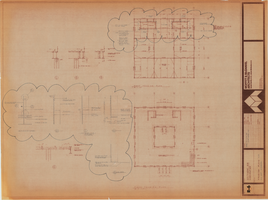
Southwest Gas Corporation office building: framing plans for air conditioner unit screens architectural drawing
Date
1974-08-18
Archival Collection
Image
Pagination
Refine my results
Content Type
Creator or Contributor
Subject
Archival Collection
Digital Project
Resource Type
Year
Material Type
Place
Language
Records Classification

